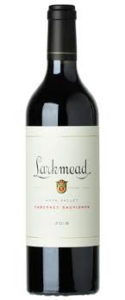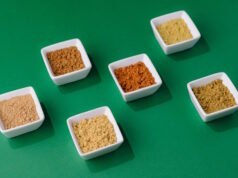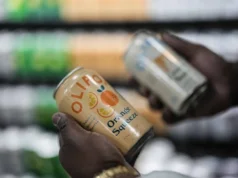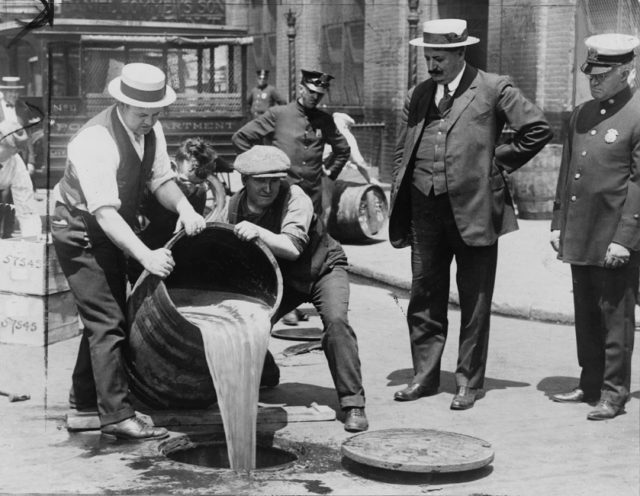
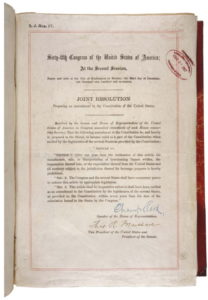
Centennial anniversaries in this country are usually marked by parades, political speeches, massive publicity and celebrations. But you probably didn’t see any of that for January’s 100-year anniversary of the start of Prohibition. Perhaps it was a mistake that we’d like to forget.
The 18th amendment was ratified in 1919, but the sales of “intoxicating liquors” began on January 16, 1920. In 1933 it was repealed by the 21st amendment – the only time in history an amendment was fully repealed.
The wine industry is much to blame for this dark chapter in U.S. history. In the early 20th century Italian immigrants were focused on making high-alcohol, fortified plonk that delivered a cheap buzz. Wine was not perceived as a sophisticated drink to share with food, but a drink to achieve intoxication.
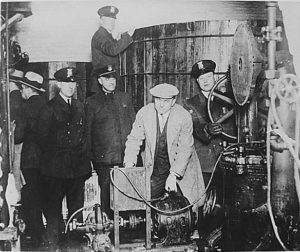
When Prohibition began, consumers turned to the black market run by gangsters and bootleggers to satisfy their thirst for wine — the law didn’t ban consumption. Loopholes in the legislation gave them the opportunity. The Volstead Act that provided for enforcement of Prohibition permitted “non-intoxicating” beverages – specifically, cider and fruit juices — made in the home. Grape growers sitting on huge inventories happily sold “bricks” of grapes that came with the ironic warning: “Do not add yeast or fermentation will result.”
Furthermore, wine could be legally produced for sacramental purposes, medical reasons and it could be used in food preparation. That gave large-scale producers such as Gallo and Mondavi an opportunity to unload their grapes. It wasn’t long before more than the Italians were making their annual allotment of 200 gallons of wine – about 1,000 bottles — in their basements.
At first, the demand increased for inferior grapes such as Thompson seedless and Alicante Bouchet drove up prices. Consumers and bootleggers alike were making wines with alcohol levels of 20 percent or more. Today’s wine hovers around 14 percent alcohol. For three decades, though, wine continued to be seen as a means for a cheap drunk. Nearly one out of four bottles sold in the late 1940s was fortified.
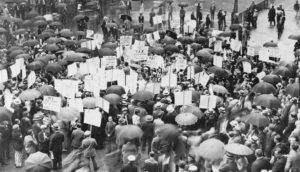
Sales were strong until one big moment changed the course of wine history – the Great Depression. Home winemakers could no longer afford their hobby and hundreds of grape growers were stuck with tons of rotting grapes. Before Prohibition there were more than 1,000 commercial wineries in the United States; before its repeal, there were only 150. The Gallo family was one of many to take the change of fortune badly. Joe Gallo, the father of Ernst and Julio, shot his wife and himself after being unable to resolve financial losses from unpurchased grapes. His brother, Mike, was imprisoned for bootlegging liquor.
After the 18th amendment was repealed in 1933, the wine industry was in disarray. Rusting production facilities, abandoned vineyards and poorly capitalized producers combined to make wine that was considered to be the worst ever made in this country. There was no regard to quality, no science, no attention to grape varieties or location. As a result, the post-Prohibition era gave rise to cocktails and whiskey at the expense of wine.
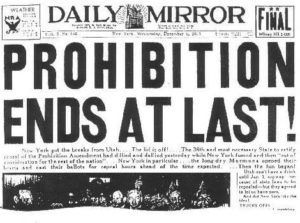
Not only did the repeal of Prohibition cause disarray among wine producers, it confused the states that were charged with regulating alcohol laws. Nineteen states decided to remain dry – the last one to give in was Mississippi in 1966. We were in high school then! Alcohol laws varied from state to state, county to county. While many of them adopted a three-tier system that created a level of distributors, some states chose to sell alcoholic beverages at state-owned stores. Some states sell beer and wine in grocery stores while requiring the sale of liquor in an adjoining store. In Maryland some counties act as their own distributors still today.
It wasn’t until the 1960s that wine was patterned after French wines that had much less alcohol. Only then did we see dedicated winemakers — Konstantin Frank, Louis Martini, the Mondavis, Jess Jackson and Warren Winiarski, Mike Grgich, David Lett and others – make decent wine to share with food.
Much of this information was gleaned from Paul Lukacs’ superb book, “American Vintage: The Rise of American Wine” that continues to serve as our favorite reference book on the evolution of American wine.
Enough history. Let’s toast to the end of Prohibition with a wine from one of the following historic producers who survived this era:
-
Larkmead Napa Valley Cabernet Sauvignon 2016 Charles Krug Napa Valley Merlot 2016 ($25). Napa Valley’s oldest winery established in 1861 was purchased by Cesare Mondavi after the repeal. There has been a lot of upheaval in the Mondavi family since then, but Peter Mondavi continues to make a good merlot at the right price.
- Louis M. Martini Napa Valley Cabernet Sauvignon 2016 ($40). Martini was making sacramental wine and concentrate for home winemaking in 1922. When it appeared that Prohibition was coming to an end, he built a winery in St. Helena. Its cabernet sauvignon continues to represent a classic style that has persisted year to year.
- Larkmead Napa Valley Cabernet Sauvignon 2016 ($135). Founded in 1895, Larkmead is still family owned. It was one of the first to get permission to resume making wine after the repeal of Prohibition. This top-drawer, concentrated wine is symbolic of the new heights of Napa Valley wine.
-
Beaulieu Vineyard Georges de Latour Private Reserve 2016 Concannon Vineyard Clone 7 Cabernet Sauvignon Livermore Valley 2014 ($90). Founded in 1883, Concannon Vineyard is said to be America’s oldest, continuously operating winery under the same family label. Captain Joe Concannon, son of the founder, kept the winery open during Prohibition by selling sacramental wine and keeping alive its historic vineyards that have since been propagated. Concannon was one of the first to blend Bordeaux grape varietals. Three of its Prohibition bottles are in the National Museum of American History. This reserve cabernet is very special, but the real deal may be Concannon’s 2016 reserve cabernet sauvignon at $40 a bottle.
- Beaulieu Vineyard Georges de Latour Private Reserve 2016 ($145). Founded by George de Latour in 1900, BV not only survived Prohibition but increased its business four-fold by selling sacramental wine to the Catholic Church. Following repeal, Latour led the way in research and quality-driven wines in Rutheford. He was greatly assisted by Russian émigré Andre Tchelistcheff, one of the most renown consultants in Napa history. The 80th anniversary Private Reserve remains an icon, but pricey at $145 a bottle. The BV Rutherford Estate Cabernet Sauvignon, on the other hand, is a steal at $45.
- Beringer Private Reserve Napa Valley Cabernet Sauvignon 2016 ($170). Established in the 19th century, Beringer survived Prohibition by making sacramental wines. A year after repeal, they became the first winery to offer tours – a tradition that continues in grand fashion today. It calls itself “California’s oldest continually operating winery,” but it is now owned by wine giant Treasury Wine Estates. Nonetheless, the Beringer Private Reserve remains a leader in Napa Valley premium wines.
Tom Marquardt and Patrick Darr have been writing a weekly wine column for more than 30 years. Additional Wine reviews on MoreAboutWine
All photos are randomly selected and do not indicate any preferred wine
You can send questions to Tom Marquardt mailto:marq1948@gmail.com[/vc_message]



